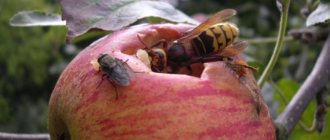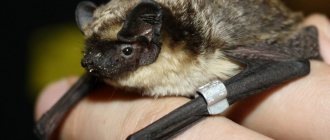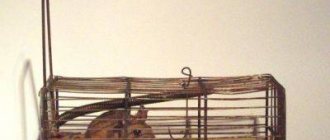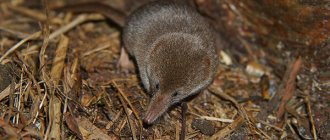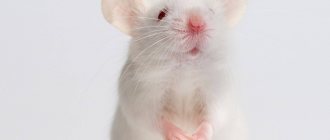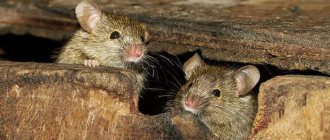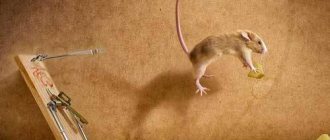Where do different types of mice live?
Due to the characteristics of the body, this animal was able to take root in any place. In most cases, they use the surface of the earth to live, however, some species have good skills in moving along vertical surfaces.
Where do mice live and how can humans meet them? Usually, people most often encounter two types of these rodents, since only the Cairo or house mouse lives near human buildings.
Some mice like to live near various bodies of water, and they swim tolerably well. They do not like to have couples and usually live alone.
However, a subspecies of the house mouse, called the Kurganchik mouse, likes to start a family of up to 20 individuals living in a common burrow. They create common reserves for wintering and build nests necessary for life.
Most mice like to live in a permanent place. They leave their inhabited area only if necessary due to some environmental changes. However, they usually do not move far, since they do not have the desire to look for a long time for a new place to live.
Mouse - description, characteristics and photos. What does a mouse look like?
The large family of mice is not fully understood. On the territory of Russia there are 13 species of animals from the order of rodents, representing 5 genera. They all have a similar appearance, structure and lead almost the same lifestyle.
Possessing a unique ability to adapt to any living conditions, mice thrive in all natural areas. The exceptions are the Far North and Antarctica. The widespread distribution of various species of rodents suggests the numerical dominance of their representatives among other mammals.
Appearance:
- The mammal has a small elongated body. Its dimensions, depending on the species of the individual, range from 5 to 20 cm. This parameter is doubled due to the tail.
- The body of the mouse is covered with short hair, the color palette of which is gray, brown, red or brown. In nature, there are striped and variegated individuals, as well as snow-white albino rodents.
- The average weight of a mouse is 20-50 grams.
- Animals have a short neck.
- On the pointed, triangular-shaped muzzle, there are small black beady eyes and semicircular ears, providing good sound perception.
- Due to the sensitive thin whiskers - vibrissae - growing around the mouse's nose, it is able to perfectly navigate its surroundings.
- The short legs are equipped with 5 tenacious fingers, allowing them to overcome significant obstacles and dig holes.
To get acquainted with representatives of the rodent order, it is advisable to carefully study the photos of mice posted on the site.
Mouse appearance
Rodents are highly fertile. At the age of 3 months, the female is capable of conception and childbearing. A wild mouse living in natural conditions breeds in the warm season, while animals living in heated rooms breed all year round.
Mice are born absolutely helpless - blind, toothless, naked. The mouse feeds it with milk for about a month. By the 10th day, the offspring are completely covered with hair, and after 3 weeks they become independent and disperse.
The smallest mice have a body length of 5 cm, and the largest can grow up to 19 cm.
Body size and coat color depend on what species a particular rodent belongs to.
Mice have a short neck, which is crowned by a spindle-shaped head. The muzzle is pointed, with a pair of semicircular ears and two beady black eyes.
These organs, although small, allow the animal to see and hear everything perfectly.
The mouse's paws are small, but they have five dexterous and tenacious fingers. The body is elongated and covered with short fur. The tail is practically devoid of hair, but has a covering of keratinized scales.
The coat color of mice is usually gray, but there are species of these animals with variegated colors. There are also white mice.
These rodents are most active at night and in the evening.
The length of the mouse’s body, covered with short fur, varies from 5 to 19 cm, depending on the species, and doubles with the tail. These rodents have a rather short neck. The pointed muzzle shows small black beady eyes and small semicircular ears, allowing the mice to hear well.
Characteristics and habitat
The shrew or long-nosed mouse is a small insectivorous animal, much like a cross between a common mouse and a mole, but with an elongated nose resembling a proboscis. These animals are among the smallest representatives of mammals.
- The body size is 3-5 cm, and the weight is only 1.5-3 grams.
- The head is large in relation to the body, the eyes and ears are small, and the legs are short.
- The shrew has thick, soft fur.
- Small eyes.
- A tail, the size of which can be completely different, from thick and short to thin and long.
The animals are very widespread, living throughout Eurasia, North America and Africa, among mountains, plains, deserts, and forests.
Long-nosed mice live in burrows that they dig out themselves or occupy other people's homes; they often settle further away from human habitation, but can be found near houses, barns, and cottages; some subspecies live near water or swamps and can lead a semi-aquatic life.
A mouse with a long nose has an increased metabolism, so it spends all its time searching for food and eating; the smaller the animal, the more often it needs to eat. The mammal is an omnivore, but its main food is worms, beetles, insects, it can catch small toads, or eat young rodents. They sleep in short intervals. If you leave a shrew without food for 7 hours or more, it will die of starvation. Due to hunger, the animal may fall into a short-term stupor.
The mouse reproduces 1-2 times a year, after winter, and gives birth to 4-14 animals. Already at 4 weeks, the cubs mature and become independent individuals, and their life expectancy becomes one and a half to two years. There are about 350 species of these animals, united in three subfamilies: shrews, mouse shrews and shrews, for the color of their teeth, pure white and brown at the tips of the teeth.
The shrew's main natural enemy is birds of prey, mainly owls, storks and scarecrows. Foxes, cats, and other predators can catch shrews, but do not eat them because of the unpleasant odor emanating from the animal.
Chemicals to control shrews
Use chemicals to control shrews only if there are no pets in the garden and children are not playing. Otherwise, their use may cause serious poisoning. In addition, when breeding and laying out poisonous baits, it is necessary to use personal protective equipment.
To kill shrews, you can use drugs such as Rat Death, Nutcracker, Mole Killer, Ratox or Hanten Anti-Rodent. The drug should be prepared according to the instructions, and then placed in each hole. It can also be placed near the entrance to the hole.
The shrew is an insectivorous animal, so if you treat grain with poison, it will not bring results. An excellent solution would be to treat the worms with a poisonous mixture, which can be cut into several parts. A shrew that eats a poisoned worm soon dies. Several burrow treatments are required to completely eliminate shrews from an area.
Another effective chemical for controlling shrews is to use tablets that release a poisonous gas when exposed to moisture. The tablets must be placed in the holes and then covered so that the gas does not escape to the surface. This method is ineffective in the case of very branched tunnels.
Natural enemies
Due to their small size, the animals are vulnerable to larger animals. The long-nosed mouse can become a victim of birds of prey, ferrets, weasels, cats, dogs, and foxes. However, predators usually refuse a snack if they smell the peculiar aroma of a shrew.
The enemy of this mouse is also man. People often mistake them for pests and destroy them. But, as practice shows, these animals bring more benefits. Of course, they can damage the root systems of small plants when they dig while chasing their prey.
But at the same time, they perfectly loosen the soil, saturate it with oxygen and fight insects that pose a danger to the crop. They manage to destroy pests in places where even birds are unable to reach them.
Population and species status
Photo: Shrew animal
As was said, shrews are widespread almost throughout the globe, with the exception of some areas, but the state of their population is quite ambiguous, it all depends on one or another variety of this animal. The population size of many shrews is stable and not subject to any threats, and some species are considered endangered and are listed in the Red Book.
If we talk about the shrew family as a whole, then only some species are considered endangered, and the numbers of other species do not cause any concern. We should not forget that these interesting insectivores have about three hundred varieties, so they are quite numerous and widely distributed across various continents, countries, regions and regions.
How mice behave in their natural environment
In order for rodents to maintain a constant body temperature, they need to be active in winter and summer, day and night. Gluttony and fussiness for mice are characteristic traits that help them survive and leave offspring.
In the fall, animals begin collecting provisions in a burrow or on the surface of the ground, where the “warehouse” is camouflaged with earth. And if in the off-season rodents are awake at night and sleep during the day, then in winter they remain active around the clock. In spring and autumn, when there is no shortage of food and no temperature fluctuations, mice actively reproduce.
Mice live in large families, since together it is easier for them to defend themselves, get food, build homes, and raise offspring. In a mouse pack there is a leader who maintains order in the group. Female mice are peaceful. But young males do not always put up with their subordinate position. Stomping with its hind legs and aggressive tail strikes indicate the animal’s intention to conquer the “throne.” Inter-family clashes can lead to the disintegration of the pack.
Peculiarities
The vole is a type of rodent that is small in size. An adult reaches a length of about 13 cm. Most of it is the tail (70%), and the rest is the body. The mouse has a pointed muzzle and small brown eyes. Her ears are folded back to her head and tilted forward slightly. They are located at the top. Ear length is from 9 to 14 mm.
The fur of this animal species is coarse and tough. In most cases it is gray, brown or beige. A dark stripe can be seen on the spine. The belly of the rodent is painted white.
The color of a mouse directly depends on its age. Older individuals have lighter fur, and vice versa, younger individuals have darker fur. Older animals develop gray hairs.
The field mouse is common in Europe. However, it can also be found in other places, such as Korea, Taiwan and Mongolia. The animal does not like forests and steppes. She likes meadows, arable lands, edges of deciduous forests and vegetable gardens. Sometimes she settles in greenhouses, cellars, and even where people live. With the onset of winter, mice begin to look for shelter. Most often these are haystacks and straw piles.
The breeding season of voles lasts from spring to autumn. During this time they produce an average of four offspring. In one litter there are from 5 to 7 mice.
These rodents are most active in the evening and at night. In autumn and winter they are active throughout the day. It is noteworthy that voles do not hibernate during the cold season.
Mice live in natural shelters or in self-dug holes. The burrows are about 4 m long. One of the 4 exits will invariably lead to a watering hole. Typically, a burrow consists of several “rooms”: 1 nesting chamber and 3 chambers for storing supplies. The latter are located at a depth of about 1 m. Those voles that live in swamps build homes on high bushes.
This type of rodent has several obvious differences from its counterparts:
- Voles are divided into two types: western and eastern. They have different colors and sizes.
- The main difference is the strip along the spine.
- Slightly larger than regular mice.
- Voles are very similar to Daurian hamsters. The only thing that distinguishes them is their long tail.
- Unlike other species, they have a longer period of puberty. On average it is 100 days.
- The field mouse is characterized by feeding movements.
- Unlike other species, they can live in swampy areas.
Lifestyle and habits
Shrew HabitatAn interesting fact about mice is how small gray mice with a bent nose use an unusual method to transfer offspring from one place to another.
If the mother needs to transfer the brood, she exposes one of the cubs to the tail. He grabs the mother with his tenacious teeth and exposes his tail to the other baby. It turns out to be a chain. This way the animals can get to the new shelter in full force. Shrew mice breed after winter. In one litter, after three weeks of pregnancy, an average of 5 babies appear. The young leave the shelter at three weeks of age.
Mice do not live long - 1.5-2 years. The lifespan of females is one month longer than that of males.
In their habitat they may encounter the following enemies:
- lizards;
- other shrews;
- other types of mice.
In this case, the mammal behaves aggressively, trying to drive the enemy out of its territory.
Babies are hunted by birds of prey and snakes. The musk secretion protects them from foxes, cats and other predatory mammals.
If this animal appears on your territory, then the question may arise of how to get rid of the shrew mouse. Methods of pest control are the same as with other rodents. You can fight shrews in your area with poison or an ultrasonic rodent repeller.
Reproduction
The mating season for shrews lasts about 5 days. A female mates with several males. They raise offspring on their own, sometimes young females are helped by experienced individuals. Pregnancy lasts 24 days.
Mice are born naked, blind, deaf, and with undeveloped limbs. Within a week they grow thick hair, after 14 days eyes appear, hearing appears, and the development of limbs is completed by 20 days of life. At 30 days, the mice become completely independent. They are expelled from the nest, but live in the same colony.
Shrews have one interesting feature of mass movement of the entire family. The mother mouse gives her tail to the most active baby, who gives his tail to his brother or sister. So everyone takes turns forming a “train”. They move together from one place to another.
About 5 cubs are born in one litter. The female gives birth about 3 times per year. With the onset of cold weather, activity decreases. An adult lives for 2 years, the male always dies 1 month earlier. Cubs often die in late autumn, the strongest survive and reproduce in the spring.
Habits and characteristics of shrews
A species of mouse that digs the ground has interesting habits, and also has several features that are not observed in any other animal.
It is worth paying attention to the following:
- Method of movement of mother and cubs.
- Juveniles at the age of 4 weeks begin to decrease in size.
- Some shrews are poisonous.
It is worth starting with the method of movement that is used by females to transfer their offspring to other burrows. The first cub firmly grasps the base of the mother's tail, the second cub - the base of the first's tail, and so on. This method is used by animals in order not to get lost.
Also, another feature was discovered by A. Dennel, a Polish zoologist, who noticed that at the moment when the young generation grows up and becomes almost the same size as adults, it begins to decrease in size. This phenomenon was named after its discoverer.
Among other things, it is worth knowing that the short-tailed shrew, which is found mainly in Canada and the United States, is poisonous. Just a couple of its bites can completely immobilize the victim. Humans also react to the shrew’s venom – the bite site becomes very swollen. This phenomenon is unique, because among mammals only the platypus and echidna have poison. If you want to know better what a shrew mouse looks like, a photo can help you.
Pregnancy, babies
A pregnant shrew carefully prepares for her litter. She lines her hole with dry leaves and grass to create a fairly soft litter. In May-July, about 6-10 cubs appear. At first the mother looks after them with trepidation and care, but very quickly her love fades. Then the cubs themselves go in search of food.
The shrew is very active and agile - it runs very fast, jumps far and even swims, if necessary. She makes whistling sounds. He has a highly developed sense of smell, but most likely never uses his sight and hearing.
The shrew is very active and agile - it runs very fast, jumps far and even swims, if necessary. She makes whistling sounds. He has a highly developed sense of smell, but most likely never uses his sight and hearing.
Benefits and harms
Perhaps someone will consider the shrew to be a worthless animal, but in reality this is not the case. For humans, this animal can be very useful.
Looking for food, shrews loosen the soil in gardens and vegetable gardens, which they do very well thanks to their unique trunk nose.
During the so-called “plowing” the soil is saturated with oxygen and at the same time cleared of harmful insects and larvae. But if you are used to seeing beautiful lawns, then, of course, the shrew will cause you a lot of trouble because of the constant minks that you will encounter on the site.
Shrews are incredibly useful creatures because they can reach many harmful insects in places that other insectivores and birds cannot reach. It is not difficult for them to find pests under stones, under snow and in the depths of burrows.
When you first meet these animals, they seem to be quite cute and fluffy creatures that are not capable of harming humans. However, if you try to catch this animal, they may bite, and the person may experience severe pain. Therefore, if you suddenly meet a shrew on your site, then forget about catching it or picking it up.
Shrews are known only to specialists, but ordinary summer residents are almost unfamiliar with them due to the fact that it is almost impossible to see these animals during the day. Many people don’t even know about the existence of a shrew: if they come across one on their way, they can easily mistake it for an ordinary mouse. And this is understandable, given that there are many similarities between them. True, you can still distinguish a shrew by the presence of a proboscis nose.
And even if you meet this creature on your site, do not try to drive it away. This is a very useful creature that will help maintain order in your garden. This animal is almost non-stop busy searching for food, looking for various harmful insects and larvae in the ground, thereby doing one of the most difficult jobs for you.
Pregnancy, babies
A pregnant shrew carefully prepares for her litter. She lines her hole with dry leaves and grass to create a fairly soft litter. In May-July, about 6-10 cubs appear. At first the mother looks after them with trepidation and care, but very quickly her love fades. Then the cubs themselves go in search of food.
The shrew is very active and agile - it runs very fast, jumps far and even swims, if necessary. She makes whistling sounds. He has a highly developed sense of smell, but most likely never uses his sight and hearing.
Interesting Facts
Scientists attribute intelligence features to shrews comparable to dolphins and rats. All thanks to the anatomical shape of the skull. Their brain region is expanded, and the brain makes up 1/10 of their body weight, which exceeds the data for humans and dolphins.
In the distant past, people attributed healing properties to animals. It was believed that an ointment prepared from the burnt tail of a shrew could serve as an excellent remedy for the bite of a rabid dog. Its origin still remains a mystery; disputes are being resolved about its identity and place in the system of zoology, as well as about the benefits and harm caused to agriculture. It is possible that soon we will learn about new discoveries and species of these living creatures.
Reproduction and offspring
Shrews breed once or twice, less often three times during the year. The gestation period lasts approximately two to three weeks. In each such litter there are from four to fourteen cubs, which are born completely blind and naked. The newborn offspring of shrews are characterized by the presence of an undeveloped proboscis, which gives their appearance a peculiar snub nose. During the summer period, under comfortable conditions, one female often raises about four dozen cubs. Moreover, some of them already manage to give birth to offspring themselves before the end of this summer.
The inside of the nest is carefully lined with dry material, such as grass or leaves. In such a nest, the cubs develop quite quickly, so already at four weeks of age they become completely independent. In shrews, the female and her offspring move in a kind of chain or so-called “caravan”, in which all individuals firmly hold each other’s tails with their teeth.
Young representatives of the class Mammals, the order Insectivores and the family Shrews are characterized by a very amazing ability called the “Denel phenomenon”. With the onset of autumn, such insectivorous mammals experience a noticeable decrease in body size, accompanied by a flattening of the skull. During the period from April to June, there is a pronounced increase in the volume of the cranium, as well as the mass and total volume of the brain.
Shrew lifestyle and nutrition
The shrew is a rather nocturnal animal, like many species of this family. In extreme heat, she never leaves her hole, since high temperatures cause her obvious painful sensations. There are cases when dead shrews were found - this is the result of the influence of sunlight. It is likely that the sun blinds them and they cannot find their way into their hole.
All shrews are terrible gluttons. Therefore, their main activity is searching for food. At one time they can eat 2-3 times their own weight in food. The shrew constantly twirls its proboscis in search of food. As a result, having caught even large prey with its sharp teeth, it will not let it go. The named animal even eats its dead brothers and cubs.
Shrews are very unsociable and, in any situation that is incomprehensible to them, immediately hide in a hole. In this they are similar to moles. These animals never get along with others, and even with their relatives. Except during mating season.
In the hope of eating each other, sometimes long fights take place between shrews - they stubbornly roll on the ground, clinging to each other with their teeth. Researchers joke about this about how good it is that these animals are small in size, otherwise they would quickly eat everyone on earth and, as a result, would die of starvation themselves.
Shrew diet
Shrews are omnivorous animals, capable of eating mainly insects, their larval stage, as well as earthworms. The mammal often attacks small vertebrates, represented by frogs, lizards, and young small rodents. The diet of shrews also includes small species of fish, amphibians and insects.
Food is searched for using a fairly acute sense of smell and sense of touch. According to scientists, some species of shrews have echolocation. In such representatives of the order Insectivores and the shrew family, metabolism is characterized by a very high level of intensity. The favorite food of shrews is represented by:
- mole crickets;
- leaf beetles;
- May beetles;
- slugs;
- woodlice;
- caterpillars;
- spiders;
- earthworms;
- larvae of insect pests.
During the day, a small animal consumes an amount of food that exceeds its own weight by one and a half or two times.
It is for this reason that shrews are able to feed almost continuously, taking short breaks only to sleep. During the hungry time of winter, death occurs very quickly, so, as a rule, only a few shrews survive until the onset of spring.
Lifestyle
The shrew mouse tries to stay away from human possessions, forced to relocate by necessity - premature frosts, floods, fires, lack of food.
In the wild, shrews feed on insects, worms, and small species of mammals. They readily eat plant foods. They bring more benefit to humans than harm - they eat harmful insects. However, in case of a severe invasion, measures must be taken, since the shrew damages crops in the fields.
The animal lives no more than 2 years, often becoming a victim of attacks by wild animals, its large relatives, birds, lizards, and snakes. It is nocturnal and builds burrows underground.
The shrew has an excellent sense of smell. This feeling helps her live, since the animal’s vision is extremely weak. In this, the mouse is similar to another underground inhabitant - the mole.
The elongated nose of the mouse can be interestingly bent upward to catch the aroma of food or the smell of an enemy. The nasal passage serves as both the eyes and the respiratory organ.
How to deal with shrews?
Since shrews are very prolific - up to 4 litters per season - their population can increase rapidly. Considering this, the question of how to get rid of shrews in the garden is very relevant.
To affirmatively say that there is one universal method of combating these pests, this is not at all true. Various methods of combating shrews and moles, which will be used in combination, will allow you to get a positive result.
Chemical methods
A chemical against moles and shrews is a fairly effective tool to quickly get rid of these pests. The market offers many different substances that should be placed near the burrows of this animal. When eating such poison, shrews suffocate, resulting in their rapid death.
Dr. Klaus "mole repellent"
It is important to remember that shrew poison should be used with great caution. All measures should be taken to ensure that children or pets do not find it in the garden.
Repellers
Shrew and mole repeller is a more humane means of combating these pests. All devices of this type can be divided into two categories:
- mechanical;
- ultrasonic.
Both types of repellers create vibrations that affect shrews, scaring them and causing them to leave the area.
Mole repeller Tornado
The simplest remedy for moles and shrews can be made with your own hands. To do this you will need an aluminum tin can or a plastic bottle. You should make a pinwheel out of them and attach it to a stick, which is driven into the ground. During its rotation, mechanical vibrations will be created, transmitted to the ground and frightened by the animals.
Traps for shrews
The fight against moles and shrews can be effectively carried out using devices such as traps. They are special devices made in the form of a pipe inserted into the passage along which the shrew moves.
The pipe has dampers on both sides that open only into the pipe. When the animal, moving through its hole, hits the sash, it will open it, climb into the pipe, and will no longer be able to get out of there on its own.
Folk remedies
A folk remedy for shrews is the simplest and most accessible option for everyone to get rid of pests.
Most often, amateur gardeners practice flooding shrew burrows with water. In some cases it is possible to get rid of the animal, but in others it is not - the pest simply digs new passages.
Since the shrew looks for food for itself with the help of its very subtle sense of smell, any strong odors are irritating for them.
You can use kerosene, naphthalene and other substances that have a strong, persistent odor. In addition to chemicals, there are also anti-shrew plants that emit specific odors that repel the animals from the garden or garden.
Folk remedies
Conclusion
Due to the fact that there are many different ways to deal with shrews, it will be quite easy to get rid of them.
It is important to immediately begin pest control as soon as they are identified in the garden or vegetable garden. To get a high fighting effect, you need to apply several methods in parallel.
Common shrew (water shrew)
If you are interested in a mouse with a long nose, then pay attention to the shrew. It has a variety of colors and belongs to the large species of shrews. Basically, its back is velvety black, and its belly is silvery-white.
The average body length is 12 cm, the tail is 5.5 cm. Its thick hair does not get wet in water. The animal has 30 teeth. The fingers have elastic bristles that help with swimming, creating a webbed effect. The tail has the appearance of a ridge, which is also an indicator of its aquatic lifestyle.
The water shrew lives in France, Norway, Great Britain, Scandinavia, right up to the very shores of the Arctic Ocean. And also in eastern Europe and China.
This animal lives in floodplain meadows, near swamps. The favorite places of the water shrew are the banks of ponds, lakes and rivers, overgrown with reeds. She swims fast and dives deep.
It feeds on aquatic worms, insects, beetles, frogs, fish and fish eggs. During the cold period, it stores reserves in its hole. Spends most of its time in the water, but also behaves quite confidently on land.
This animal has earned the nickname "Vampire Deer" for its prominent tusks, which are used in battles for territory.
It can grow up to 180 cm long and weigh up to 70 kg. If you are in China and see such a creature in a local pond, then know that the water in this reservoir is very clean and cold.
The body length is, on average, 12 cm, the tail is 5.5 cm. Its thick hair does not get wet in water. The animal has 30 teeth. The fingers have elastic bristles that help with swimming, creating a webbed effect. The tail has the appearance of a ridge, which is also an indicator of its aquatic lifestyle.
This animal lives in floodplain meadows, near swamps. The favorite places of the water shrew are the banks of ponds, lakes and rivers, overgrown with reeds. She swims fast and dives deep.
Description
The shrew is not much different in appearance from the mouse. The main difference between the animal is its tail and the presence of a long proboscis. In temperate latitudes you can find two types of shrews:
- dwarf shrew;
- tiny shrew.
In Russia, the second species is especially often a source of concern for gardeners. The following signs will allow you to accurately recognize the pest:
- The animal has an elongated head and a movable proboscis, which is lighter in color;
- The animal reaches a size of 19-25 cm, covered with short fluffy fur;
- The wool is brown with a slight gray tint;
- The animal's tail is thicker than that of a mouse and does not exceed 5 cm in length;
- The tiny shrew is very mobile, moves quickly, and is capable of digging long passages in the ground that look like mole holes;
- Lives in mid-latitudes. Prefers damp places with an abundance of food: vegetable gardens, orchards, lawns, summer cottages;
- Shrews often settle near a reservoir, under rotten stumps, and occupy the holes of moles and mice;
- The pest uses only insects and small amphibians for food; it is not interested in worms and potato tubers;
- Each shrew has its own hunting area measuring several tens of square meters;
- The shrew stores uneaten food in a nest underground;
- The shrew's nest is small, inconspicuous, lined inside with dry leaves and twigs;
- A fast metabolism requires the animal to have an active lifestyle and a continuous search for food;
- The shrew protects its territory from other animals.
Kinds
Types of shrews There are three subfamilies of shrews, which include 350 different species of animals. About 25 species of this mouse live in Russia. The most famous are the common shrew, house shrew, tiny shrew and water shrew.
Common shrew
The elongated nose of the animal has a blunt shape. The back of the body is dark brown. The belly is also brown, but lighter. The ears are completely covered with short and thick fur. The tail of the shrew mouse is equal to the length of the body. There is no fur on it. The lifespan of a mouse with a long nose is two years.
The animal can grow up to 8 mm. Weight ranges from 4 g to 16 g. The tail grows up to 7.5 centimeters.
Tiny shrew
The smallest mammal that lives on the territory of the Russian Federation. Body size ranges from 4-5cm. The tail does not exceed three centimeters. The weight of the animal is 2 g, but can reach 4 grams. The nasal portion of the head resembles a proboscis.
The body and tail of the mammal are covered with thick and short hair. The belly is silver in color, and the back is brown or brown. The color transition from dark to light is clearly visible on the sides of the body. In winter, the animal is more intensely colored.
The shrew is listed in the Red Book of the Murmansk region. It is impossible to calculate the exact number of the tiny shrew due to its small size.
House shrew
This mouse is also called the long-tailed shrew or common shrew. The length of the animal reaches 8 centimeters, and the tail grows up to five centimeters. The fur on the back is dark brown. The belly is gray.
The shrew mouse can live in the basement or cellar. There she looks for human food and can eat up supplies of lard, sour cream, and meat. Then you have to deal with getting rid of the invader. In the wild, the animal hunts insects and small mammals. It is guided by smell and can funnyly bend its nose while sniffing out prey.
Water shrew
The animal also has another name - common shrew. The animal grows up to 12 centimeters, and its tail reaches 55 mm in length. The fingers have membranes that help the mammal swim.
The mouse can dive and swim quickly. Her life takes place near swamps, lakes and rivers. There she hunts and gets her food.
How to get rid of shrews in your country house (garden)
How to get rid of shrews on the site is a question that worries many gardeners. After all, when animals appear in a summer cottage or garden, they create many problems. Moreover, the animal is nimble, rarely appears on the surface, and it is quite difficult to fight it. Methods for getting rid of shrews are similar to fighting moles. Use
- chemical,
- physical,
- mechanical,
- folk methods.
Chemicals
Find shrew burrows. Pour odorous substances into it, such as mothballs, tobacco, or fill the minks with diesel fuel.
Other effective remedies are “Hunter Anti-Rodent”, “Nutcracker”, “Ekar”, “Rat Death”, which cause suffocation and death in the animal. Products are purchased in specialized stores. Before use, you must read the instructions; do not use them near trees and bushes.
Since chemicals are potent, when working with them, wear protective clothing, a respirator or a cotton-gauze mask, and gloves.
Ordinary baits for mice or rats are also used, which are placed near the burrows.
Physical methods
Deterrents are used, such as pinwheels with tin cans and beer cans. Dangling on a stick stuck in the ground, they create a vibration that causes discomfort in the ground for the animals, forcing them to leave.
Some gardeners use firecrackers, which they throw into a hole and immediately cover it with earth. The use of ultrasonic repellers has a certain effect.
Mechanical methods
By flooding the burrows with water from a hose, the animals can be driven out of their burrows. Of course, they will have to be guarded when they escape from there, and somehow destroyed. Or use mole traps and traps, placing them in holes.
Traditional methods
Domestic cats can help fight shrews. Some hunting cats can catch them in the heat of the hunt. But they won’t eat them - the animals have special glands that secrete a pungent and unpleasant odor. This is their only defense against other small predators.
Try planting marigolds in your area; shrews don’t like their smell. Also, the animals do not like beans, beans, peas, or spurge. Perhaps the plants will scare away the shrews.
Where does the shrew live?
Photo: Animal shrew
Various species of shrews have settled throughout our planet. They live almost everywhere, they can not be found only on the Australian continent, in the polar regions, New Zealand and New Guinea, as well as in parts of South America, which are south of countries such as Venezuela, Ecuador and Colombia.
These insectivorous creatures adapt to life in various territories:
- On flat areas;
- In mountain ranges (up to 4 km altitude);
- In deserts and semi-deserts;
- In tropical rainforests;
- In wetlands.
Each animal has its own domain, the territory of which it vigilantly guards to avoid encroachment by uninvited guests. If someone has invaded the shrew’s allotment, then a struggle for the hunting area begins, the outcome of which can be fatal for one of the rivals. Shrews enter into fights not only with their own kind, but also with mice and lizards.
Burrows serve as a refuge and home for shrews, but they themselves dig them infrequently, but try to occupy someone else’s hole left by someone else. If they have to dig their own shelter, they make it shallow.
Insectivorous creatures love the hollows of rotten trees, where they also set up their homes. In their dens, shrews make soft and comfortable bedding from last year's leaves. We can say with confidence that shrews are sedentary animals that adhere to a certain territory throughout their short lives.
Structure and appearance
A mouse with a long nose is also called a shrew. Outwardly, it very much resembles a vole. But unlike her, this animal has a long nose, which looks more like a proboscis. The rodent's eyes are small and can be hidden behind the fur.
During evolution, the shrew has lost its visual acuity, so it uses a keen sense of smell and excellent hearing to orient itself in space.
The animal's body is elongated and covered with smooth dark brown fur, to which the earth does not stick. The shrew's front legs are short and very weak. They are not designed for digging. Therefore, an animal can make a tunnel or burrow for itself only in loose soil, or it uses passages made by moles or other animals.
Common long-tailed shrew (house shrew)
Another mouse with a long nose is the common long-tailed shrew. This is an animal with a body length of 7-8 cm and a tail of 4-5 cm. The fur on the top and sides is brown, and on the abdomen it is light gray. There is brownish-white hair on the paws. The upper part of the tail is dark gray, the lower part is gray. The animal has 28 teeth.
From Africa, this species gradually spread throughout Europe, including northern Russia. The long-tailed shrew also lives in Siberia and Asian countries. This animal is found extremely rarely in groves and forests, as it prefers fields, gardens and vegetable gardens.
It is not for nothing that the long-tailed shrew has the second name “house shrew”. No other species will ever walk peacefully through a human home. It is successfully installed in basements, cellars, storage rooms, settling in some dark corner that is more or less safe. Can go hunting at any time of the day or night. In the wild, it gives preference to mammals, but at home it arranges a “belly feast” for itself, choosing what is tastier and fattier - lard, meat, butter, sour cream. Other habits and customs of the house shrew are no different from other species.
An interesting behavior of her brood has been noticed - small animals move after their mother in an even line, holding the tip of the tail of the one in front with their tenacious teeth. This trait is almost never seen in other shrews.
